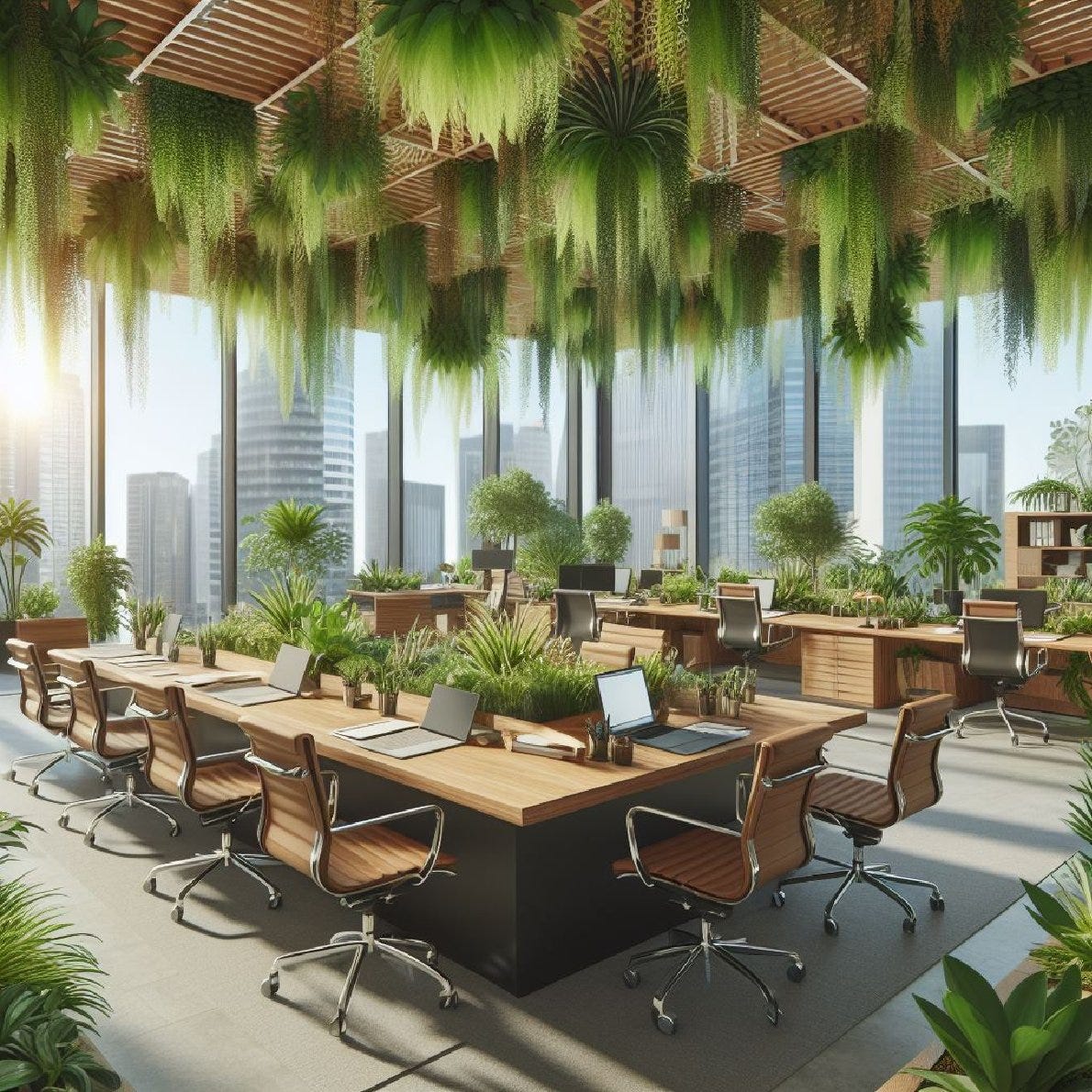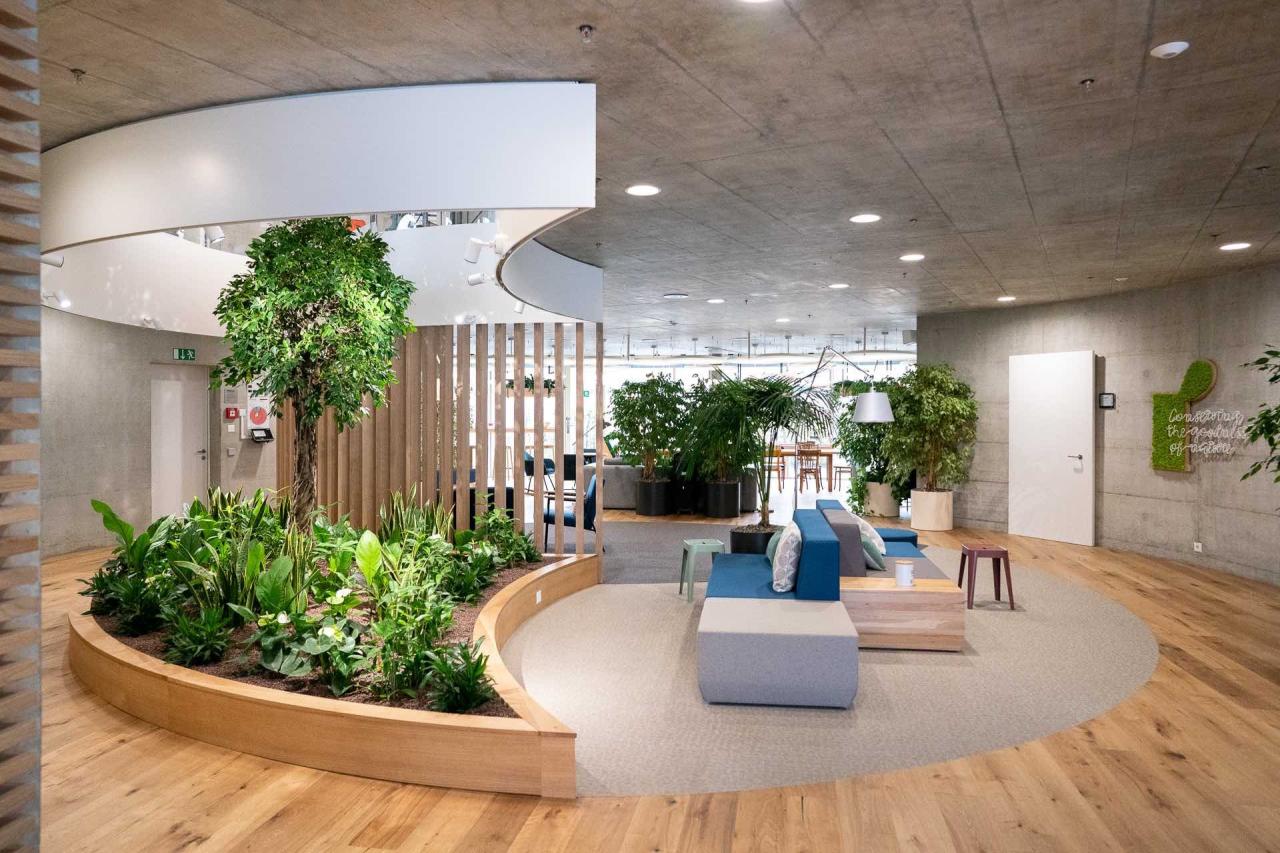Enhancing Mental Wellness: The Power of Biophilic Design

In today's fast-paced world, the importance of mental wellness cannot be overstated. One innovative approach gaining traction is biophilic design, which seamlessly integrates nature into our living spaces to promote mental well-being. Let's delve into how this design philosophy can profoundly impact our lives.
As we explore the principles and benefits of biophilic design, a fascinating journey unfolds revealing the profound connection between our environment and mental wellness.
Introduction to Biophilic Design
Biophilic design is a concept that integrates nature into the built environment to enhance human well-being. By incorporating natural elements and patterns, biophilic design aims to create spaces that promote mental wellness and connection to the natural world.
Principles of Biophilic Design
- Use of natural light to mimic the sun's rhythms and create a connection to the outdoors.
- Incorporation of plants and greenery to improve air quality and reduce stress levels.
- Utilization of natural materials such as wood, stone, and water to evoke a sense of nature indoors.
Psychological Benefits of Biophilic Design

Biophilic design goes beyond just creating visually appealing spaces; it also has a profound impact on our mental well-being. By incorporating elements of nature into our built environment, biophilic design has been shown to reduce stress and anxiety, improve mood, and enhance overall mental health.
Reducing Stress and Anxiety
Research has demonstrated that exposure to natural elements such as sunlight, plants, and water can have a calming effect on our minds, helping to lower stress levels and reduce feelings of anxiety. By bringing these elements indoors through biophilic design, we can create spaces that promote relaxation and tranquility.
Positive Impact of Nature on Mental Health
Being in nature has long been associated with positive effects on mental health and well-being. Studies have shown that spending time in natural environments can help improve mood, increase feelings of happiness, and reduce symptoms of depression. By incorporating natural elements into our living and working spaces, biophilic design can help to bring these benefits indoors.
Research Findings on Improved Mood
Numerous studies have explored the relationship between biophilic design and mood. One study found that office workers in spaces with biophilic elements reported higher levels of well-being and overall job satisfaction compared to those in traditional office settings. This highlights the significant impact that biophilic design can have on our mood and emotional state.
Elements of Biophilic Design
Biophilic design incorporates various elements inspired by nature to create spaces that promote mental wellness and overall well-being. These elements not only enhance the aesthetic appeal of a space but also have numerous benefits for the occupants.
Green Walls, Water Features, and Natural Ventilation
- Green walls, also known as living walls, are vertical gardens that are filled with plants. They not only improve air quality by absorbing pollutants but also create a sense of tranquility and connection to nature.
- Water features such as fountains or indoor ponds can have a calming effect on individuals, reducing stress and promoting relaxation.
- Natural ventilation systems allow fresh air to circulate within a space, improving indoor air quality and creating a more comfortable environment for occupants.
Nature-Inspired Colors and Patterns
- Incorporating nature-inspired colors like greens, blues, and earth tones can have a soothing effect on individuals, reducing anxiety and promoting a sense of calm.
- Natural patterns such as leaf motifs or organic shapes can evoke feelings of being in nature, even when indoors, enhancing the overall well-being of individuals.
Views of Nature and Outdoor Spaces
- Access to views of nature, whether through windows or strategically placed openings, can have a positive impact on mental health, reducing feelings of stress and improving mood.
- Providing access to outdoor spaces such as gardens or terraces allows individuals to connect with nature directly, fostering a sense of well-being and enhancing overall quality of life.
Biophilic Design in Different Settings

Biophilic design is a versatile concept that can be effectively implemented in various settings to enhance the well-being of individuals. Let's explore how this design approach is utilized in different environments.
Biophilic Design in Residential Spaces
In residential spaces, biophilic design focuses on bringing elements of nature into the home to create a sense of tranquility and connection with the outdoors. This can include large windows to allow natural light in, indoor plants to improve air quality, and natural materials like wood and stone for a more organic feel.
By incorporating these elements, residents can experience reduced stress levels, improved mood, and a greater overall sense of well-being.
Biophilic Design in Work Environments
In work environments, biophilic design is used to foster productivity, creativity, and overall employee well-being. This can involve incorporating elements such as natural light, greenery, and views of nature to create a more positive and inspiring workspace. Studies have shown that employees working in spaces with biophilic design elements report higher levels of job satisfaction, lower stress levels, and increased creativity.
Biophilic Design in Healthcare Settings
In healthcare settings, biophilic design is utilized to promote healing and well-being among patients and staff. Incorporating elements of nature, such as natural light, views of greenery, and soothing colors, can have a positive impact on recovery times, stress levels, and overall patient outcomes.
By creating healing environments inspired by nature, healthcare facilities can improve the well-being of individuals and contribute to their overall healing process.
Incorporating Biophilic Design Principles

Integrating biophilic design principles into existing spaces can significantly enhance the overall well-being of occupants without the need for a complete renovation. By strategically incorporating natural elements, architecture, and interior design, you can create a more harmonious and nature-inspired environment.
Tips for Integrating Biophilic Design
- Introduce natural light: Maximize the use of natural light by opening up windows, using light-filtering curtains, and incorporating skylights to bring the outdoors in.
- Use natural materials: Incorporate wood, stone, bamboo, or other natural materials in furniture, flooring, and decor to create a sense of connection to nature.
- Add greenery: Include indoor plants and living walls to improve air quality, reduce stress, and enhance the visual appeal of the space.
- Create views of nature: Position workstations or seating areas near windows with views of greenery, water features, or natural landscapes to promote relaxation and focus.
Role of Architecture and Interior Design
Architects and interior designers play a crucial role in creating biophilic environments by incorporating elements like organic shapes, natural colors, and textures inspired by the natural world. By designing spaces that mimic natural settings, they can improve mental wellness, productivity, and overall satisfaction of occupants.
Epilogue
As we conclude our discussion on biophilic design and mental wellness, it becomes clear that the bond between nature and our well-being is undeniable. By incorporating these principles into our spaces, we pave the way for a healthier and more harmonious future.
Essential Questionnaire
How does biophilic design impact mental wellness?
Biophilic design has been shown to reduce stress, anxiety, and improve mood by incorporating natural elements into living spaces.
What are some examples of biophilic design elements?
Examples include natural light, plants, green walls, water features, and natural ventilation.
Can biophilic design be implemented in work environments?
Absolutely, biophilic design in workspaces can boost productivity, creativity, and overall well-being of employees.

